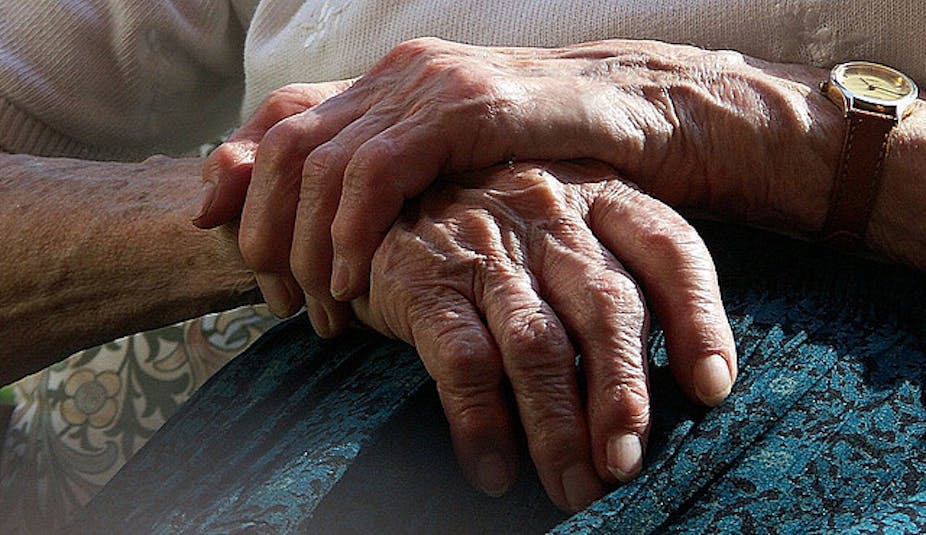Switch on daytime television on any given day and you’d be forgiven for thinking there was a cure for the debilitating and dreaded condition, osteoarthritis.
Unfortunately, there’s not. And that’s not from want of trying. With the exception of the common cold, no everyday health problem has been as extensively studied with such little result.
Osteoarthritis is the most common form of arthritis, affecting around 1.6 million Australians. The hallmark of osteoarthritis is loss of cartilage which lines major joints – this causes the classic symptoms of pain and stiffness in the affected joints.
Or does it? One of the major frustrations in osteoarthritis research is the absence of research showing the correlation between the state of joints on X-rays and the degree of pain and disability the operator of the joint experiences.
To work out what creates the pain in osteoarthritis, researchers need to look beyond the joint.
Many studies using magnetic resonance imaging (MRIs) suggest the bone marrow around the joint is a potent source of pain. And further away, in the spinal cord and brain, there may be abnormal processing of pain signals.
When you add the standard physiological, genetic and psychological complexities common to all types of long-term pain, you begin to see why finding durable, meaningful relief from osteoarthritis pain is so difficult.
What osteoarthritis sufferers don’t need is to be presented with a steady stream of fake and cynical products which reflect none of this hard-won knowledge.
Tabloid media, particularly television, often feature products promising relief from arthritis pain. This story from A Current Affair is fairly typical of the genre. The product is usually presented as an infomercial, with no critical analysis from the reporter. A couple of testimonial cases are then wheeled out for breathless adoration.
There is also invariably some type of pseudoscientific angle presented as an explanation for the miraculous healing powers of the product. It’s often cast as a “secret breakthrough” discovered by a lone misunderstood genius, who is persecuted by vested interests in the pharmaceutical industry.
So how does this type of misinformation make its way onto our television screens and magazines?
The Therapeutic Goods Advertising Code contains what would be robust protection for consumers – if it were adequately policed.
But the Code is held in such low regard by product manufacturers and distributors that some don’t bother to follow the Code. Others don’t do their research to understand the Code before tipping thousands of dollars into promoting their questionable devices or pills.
Many of the less scrupulous operators simply ignore TGA sanctions, or make the minimum required changes to their advertising, while maintaining claims about efficacy.
Cynics can chuckle that there’s no great harm in condoning this thriving industry built on deceptive advertising. They may even say it’s a tax on gullibility.
But it makes things much harder for those of us whose careers involve trying to steer these osteoarthritis sufferers towards the proven interventions that can reduce their disability and pain.
There aren’t any miracle cures for osteoarthritis but there are evidence-based measures to treat the condition or reduce its severity. These include:
peer-led education groups;
carefully tailored weight loss;
cognitive-behavioural treatment;
judicious medication use; and
joint replacement.
These measures aren’t glamorous and challenge sufferers’ beliefs about their pain and their lifestyle. This type of change is hard for individuals to contemplate, and difficult to resource and implement.
For the average Australian without much scientific background, it’s easy to see the attraction of a simple and compelling story about a miraculous cure.
So what’s the solution?
Well, for a start, health-care professions should do more to educate consumers about dodgy arthritis products and avoid lending our professional credibility to endorsing them.
And the government needs to step in with some ruthless regulation.

